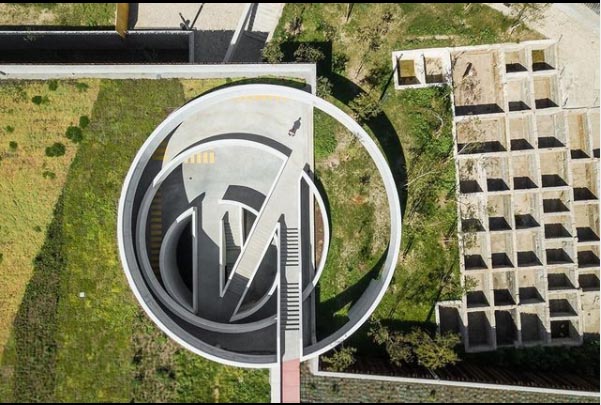May 2 2021
7 ways to make project Location and Transportation more sustainable:
Steps in your green building process
BY JOSEPH AZAR
 By now we all know that Sustainability should be integrated in our design practice and in the way we should approach all our architectural projects , so it is our responsibility to take action all of us together as Entrepreneurs , Owners, Clients, Architects, Engineers, manufacturers etc… because of the obvious big impact buildings can have.
By now we all know that Sustainability should be integrated in our design practice and in the way we should approach all our architectural projects , so it is our responsibility to take action all of us together as Entrepreneurs , Owners, Clients, Architects, Engineers, manufacturers etc… because of the obvious big impact buildings can have.
IMPACT OF BUILDINGS ON ENERGY CONSUMPTION !
From an architectural lens, buildings are the largest users of energy in our society, so this means also are also our greatest opportunity for energy conservation and protection of the environment.
The rapidly growing world energy use has raised global concerns over continued depletion of energy resources and their negative environmental impacts, current prediction shows that this growing trend will continue.
I be will starting series of articles considering different aspects of green building design and technical information with this first article about location and transportation and to note my approach will be taking as a basis LEED (Leadership in Energy and Environmental Design) which is the most widely used green building rating system in the world. Available for virtually all building types, LEED provides a framework for healthy, highly efficient, and cost-saving green buildings. LEED certification is a globally recognized symbol of sustainability achievement and leadership.LEED is for all building types and all building phases including new construction, interior fit outs, operations and maintenance and core and shell. to If you want to know more about LEED please check this link https://www.usgbc.org/help/what-leed
HOW CAN LOCATION AND TRANSPORTATION CHOICES AFFECT THE SUSTAINABILITY OF OUR PROJECT AND WHAT ARE THE MAIN THINGS TO CONSIDER?
- Sensitive land protection:
Always try to choose the location of your building on a previously developed areas, and this choice should be done from the beginning in order to avoid causing any disturbance of the sensitive areas:
Never develop on a prime farmlands, or flood plains, or on lands that are habitat for endangered species.
Never develop near water bodies or be at least 100 feet or 30 meters distance away, same strategy concerning wetlands be at least 50 feet away or 15 meters.

2.High priority site:
Always remember to take into consideration the conservation of sites classified as historic district, it is good to know how a site is to be classified as such and designated so a 100 years neighborhood doesn’t necessarily fall under this categorization and doesn’t qualify automatically as historical district.
Remember again it is always better to choose a developed land area, what this means a land that have a 75 % or more of infill within 1.5 miles=800 meter.
Another important thing that should be taken into consideration if the site has a priority designation in general as it is referenced under EPA national priority list, Federal empowerment zone or federal enterprise community usually done to promote growth in such areas, also is in a federal renewal community, or is in a department for treasury community development, or in places where community site is in a US department of housing and urban development, or places qualified as difficult development areas , taking US as an example but check if there is such designation in your country or where you are building your project.
Even if only a portion of the site is in a priority designation this will still count, as in the LEED rating system count this in their credit points.
- Brownfield remediation:
If a site is polluted consider to remediate the site or select a remediated site to contribute in recovery and what this means is cleaning the site by using chemical, physical or biological means, to mention an example one are could have a soil contamination.
So, how can we know that? This could be done by using a site pond that tests for high levels of toxic chemicals, and this can be determined through a phase 1 and phase 2 site assessment.
- Surrounding density and diverse uses:
A good choice is to locate the project in a developed area where a lot of the existing infrastructures and diverse uses could be shared, and there is a minimum of surrounding density, to determine this, a calculation should be done but I won’t get into technical application here.
Concerning diverse uses, also as a simplification for the idea it is related to the walking distance from the location of our project to some well specified diverse uses that falls under specific categories like food retail, community serving retail, services, civic and community facilities, and community anchor uses, so after all no matter how sustainable your project construction is, if it is not near diverse uses the consumption of energy from transportation will be huge and thus it wouldn’t be efficient at all in energy saving.
5.Access to quality transit:
Another important thing to check for is the access for quality transit, just imagine how much energy could be saved just by locating the project near a bus station, rapid transit, ferry terminals, or where street and ride shares are available instead of which each individual using individual car and causing traffic pollution and consuming too much energy at the same time.
Of course, we should specify this where there is a minimum numbers of daily trips, per week and during the weekends, that would be the base on which we decide but again this is the technical part and calculations that we won’t address in this article.
6.Locations providing a bicycle network:
Check a choice with a bicycle network availability with a certain maximum distance from our project that shouldn’t be surpassed, the second step is to provide the project with short term and long term bicycle storage to mention this differs according to the project type if residential or commercial.
7.Reduce the parking footprint:
In addition to reducing the parking footprint, check the possibility of underground and a covered parking, also use incentives in order to make people use green vehicles and provide them with electric vehicle station inside your project and other related liquid and battery facilities.

THE CONCLUSION:
In the end an invitation for anyone who wants to build a new project take your time to think about your location, also for architects if engaged early in the choice of the plot they should be giving the right advice for their clients and showing them the pros and cons .
So the most important question that we should be asking ourselves early from the beginning : where should we locate our project according to the specific project function, taking basis our different key parameters explained here in order to have the best impact on our long term project sustainability.

Artist/Architect/ LEED AP (BD+C)
Date : May 2 2021